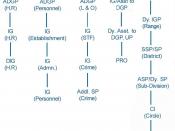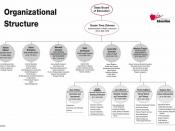The term organizational effectiveness has received considerable criticism as to the way it is viewed by its many stakeholders. For instance, the achievement of goals and objectives, resource acquisition and allocation, internal effectiveness and stakeholder satisfaction can all be interpreted differently by its various stakeholders (employees, top management and shareholders). It can be broadly defined as "the importance of achieving productivity through the effective management of people, and their commitment to, and involvement with, the organization"1.
The question is whether the degree of organizational effectiveness will revolve around the relationship of an organisation's structure and its environment. This essay will identify the various theories of structure that have evolved in recent years and examine if there is a "fit" with the organisation's environment.
The first attempt to define an organisation's structure was made by Classical theorists who assumed that there is a universal set of principles of management and organization that apply in all circumstances.
It placed emphasis on the technical and structural factors of an organization. In particular, attention is given to the division of work, a clear definition of and responsibilities, specialization and co-ordination, meanwhile maintaining a hierarchy of management marked by formal organization relationships. Classical writers envisage the improvement of an organisation's structure as a means of increasing efficiency.
One of the pioneers of classical theory is F.W Taylor with Scientific Management Theory. This theory claims that there exists a best working method for each task in which there is a scientific method of finding the "one best way" to complete a certain task. This assumption led to the breaking down of each job into individual components which lead to increased efficiency and productivity. On the other hand, this method caused the deskilling of workers and the loss of craftsmanship. As a consequence, workers were frustrated...


